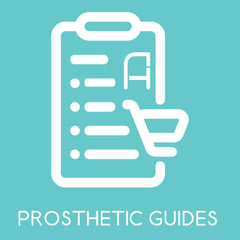Transforming Anxious Thoughts Through Mind Training
Reading Time: 6 minutes
Anxiety is increasingly common, especially for individuals navigating challenges like limb loss. Throughout history, anxiety has been a topic of study and treatment, but recently, mindfulness has emerged as a powerful tool for managing these feelings.

In this article, we’ll explore strategies from the book “Unwinding Anxiety” by Judson Brewer, MD, PhD, that you can use to train your mind for better anxiety management. We hope these tips will help you regain a sense of control and well-being.
The role of the prefrontal cortex
Anxiety is a common mental health condition marked by intense worry and fear. But unlike fear alone, which is an immediate reaction rooted in the brain’s most primitive areas, anxiety involves the prefrontal cortex—a newer part of the brain responsible for reasoning and planning.
The prefrontal cortex is typically effective when enough information is available. However, it can become overwhelmed by uncertainty. This leads to a barrage of possible scenarios and responses, ultimately overwhelming the brain and possibly triggering a state of panic (hello, anxiety!).
This chain of reaction suggests that simply trying to suppress or rationalize away anxiety isn’t effective, as it requires the very part of the brain that’s overwhelmed. In the book, Dr. Brewer presents a three-step mindfulness approach designed to address this issue.
Mindfulness allows you to view anxiety not solely as a negative experience but also as an opportunity for growth and self-discovery, allowing you to shift your perspective toward acceptance and compassion rather than control or suppression.
1. Recognize habit loops
Post-amputation, it’s common to experience feelings of anxiety, especially as you navigate a lot of unknowns. This anxiety can often lead to what Dr. Brewer refers to as “habit loops”—repetitive behaviors that may not serve you well.
In times of stress, you might find yourself planning every detail of your day, constantly checking your surroundings, or even seeking distractions from your thoughts. While these actions may feel like coping mechanisms, they often don’t provide the relief you hope for and can become so automatic that you don’t even realize you’re doing them.
The first step to managing anxiety is to recognize these habit loops, especially when you find yourself caught in one. Each person has unique patterns; yours might involve procrastinating on tasks related to your new lifestyle, avoiding social situations, or excessively planning for every potential challenge.
Take some time to explore the behaviors you rely on when feeling anxious (over-scrolling? Binge-watching?). Recognize that these behaviors may be masking deeper concerns. With mindfulness, you can strive to become more aware of these behaviors in the moment. And by understanding your habits, you can begin to untangle them and address the real issues that may be causing your anxiety.
2. Sit with your negative feelings
Our brains often gravitate towards habits that offer immediate rewards, even if they aren’t beneficial. For example, think about how appealing it is to indulge in sweet treats over healthier options, like fruits and vegetables. When you choose quick comforts during tough times, like grabbing an ultra-processed snack or losing yourself in social media, you are reinforcing habits that don’t serve your well-being, much like how a sugary dessert feels more rewarding than a nutritious meal. Choosing these habits every time you feel anxious leads to habits that provide temporary relief but aren’t the best for your long-term health.
But you can leverage mindfulness to help break these cycles.
Take a moment to be fully aware of what you’re doing when seeking comfort or distraction, whether it’s scrolling through your phone, overscheduling your day, or reverting to less healthy eating habits. Focus on the sensations in your body, the emotions that arise, and the thoughts in your mind during these moments. By observing these feelings without judgment, you can start to recognize when these behaviors begin to shift from feeling rewarding to becoming uncomfortable, unhelpful, or even harmful.
For example, while planning and organizing can be beneficial, excessive worrying about what could go wrong can increase anxiety. Pay close attention to how it feels at different moments—when it shifts from giving you a sense of control to feeling like you want to exhaust all options.
Another example is binge-watching. While it’s okay to give in to the call of the couch once in a while, binge-watching often can be detrimental. Be aware of how you’re feeling. Are you constantly pushing your bedtime in exchange for another episode? Are you feeling uncomfortably sleepy, and yet you ignore your body’s needs? Through awareness, you can train your mind to understand that not all coping mechanisms deliver positive results, paving the way for healthier choices that support your journey.
3. Find a better source of fulfillment
Instead of falling back on habits that may not serve you well, consider embracing more rewarding experiences. Being mindful itself can be a great source of joy and accomplishment. For example, if you’ve done 10 minutes of meditation, you likely felt a sense of calm, openness, and heightened awareness. Embrace that feeling! Allow your brain to recognize just how much more positive this experience is compared to cycles of anxiety.
Mindfulness also fosters a sense of curiosity, which can counter the restlessness that often triggers cycles of worry. When you feel anxious, take a moment to explore how you feel in your body. Focus on where you feel it and what it feels like. This act of curiosity can provide deeper satisfaction than simply attempting to eliminate your anxiety by turning to your usual coping mechanisms, like social media or food.
You might also shift your attention to your breath, a powerful ally in calming yourself. Inhale slowly through your nose, directing the breath to where you notice stress or unease in your body. Hold it for a moment, and as you exhale, visualize that tension leaving your body with your breath. Allow your mind to engage in something more satisfying and enriching than worrying about the past or future. By nurturing this practice, you can redefine your relationship with anxiety and cultivate a more meaningful and fulfilling experience in life.
The bottom line
Mindfulness plays a crucial role in navigating life post-amputation. It enables you to recognize moments when anxiety might creep in, better understanding how these feelings affect you, and then leading you to healthier alternatives. Mindfulness allows you to view anxiety not solely as a negative experience but also as an opportunity for growth and self-discovery, allowing you to shift your perspective towards acceptance and compassion rather than control or suppression.
With time and practice, embracing mindfulness and trusting your own experiences can help you gradually shift your mindset, overcoming anxiety one step at a time.










































































